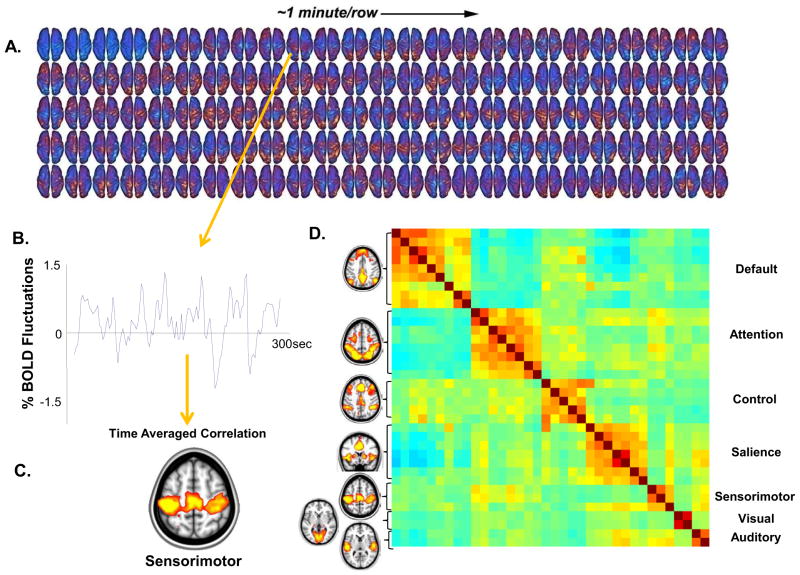Figure 1.
From the fluctuating patterns of intrinsic activity seen in the human brain with fMRI BOLD imaging striking patterns of spatial coherence within known brain systems can be extracted. A single subject example of data from which these patterns are derived is shown (A). These data were obtained continuously over a period of 5 minutes (each row is one minute, each frame is 2.3 seconds). An interpolated version of these data in a movie format may be downloaded from (ftp://imaging.wustl.edu/pub/raichlab/restless_brain). Patterns of spatial coherence are obtained by placing a seed region in a single focus within a system (in this case in the sensorimotor cortex) and extracting the resulting BOLD time series (B). This time series is then used to search the brain for correlated time series. The results are brain-network specific images of spatial coherence in the ongoing activity of the brain (C). This strategy has been applied with ever increasing sophistication to systems throughout the human brain. A more complete description of the data processing steps leading to such images is presented elsewhere along with alternate strategies (94). Shown in (D) are 7 major brain networks analyzed in this way accompanied by a. cross-correlogram constructed from regions of interest within the 7 brain networks shown. The data represent a 30 minute average from a normal adult male volunteer resting quietly in 3T scanner (Siemens Trio) but awake. The names of the regions are shown along the right. The diagonal of the correlogram represents the correlation of each region with itself. It should be noted that while correlations within networks appear distinctive in this presentation, relationships among networks (both positive and negative) are also prominent emphasizing the integrated nature of the brain’s functional networks. An additional important feature of the data presented in this cross-correlogram is its temporal dynamics. While not feasible to present in the form of static images these temporal dynamics in movie format may be downloaded from (ftp://imaging.wustl.edu/pub/raichlab/restless_brain).

